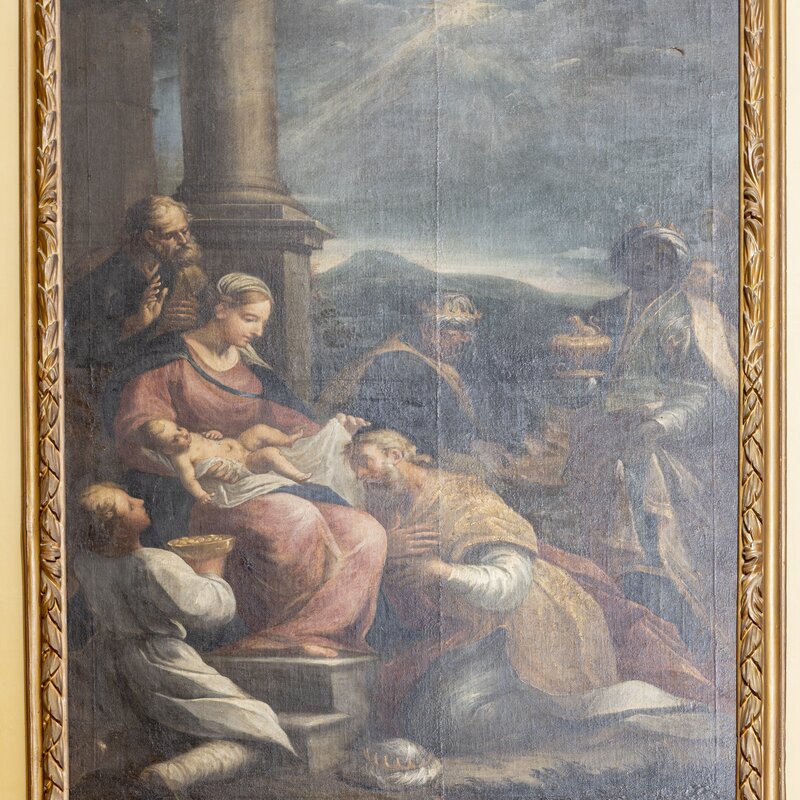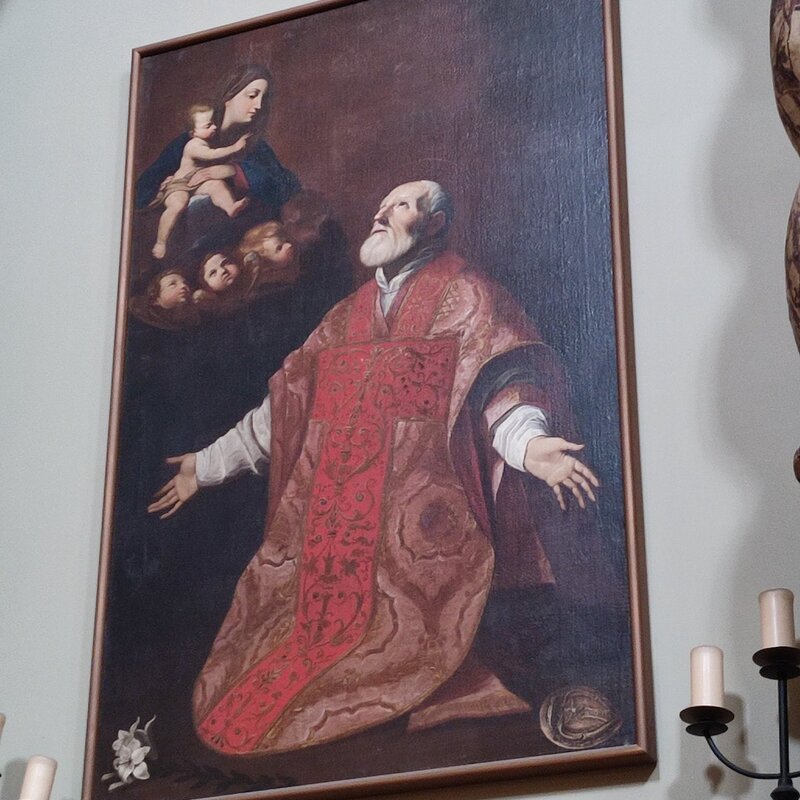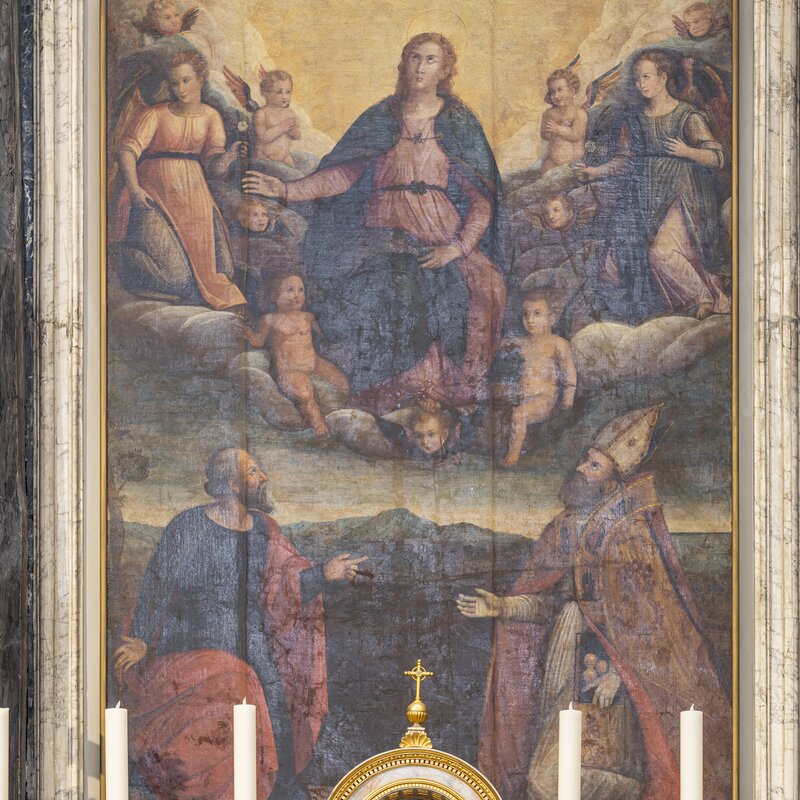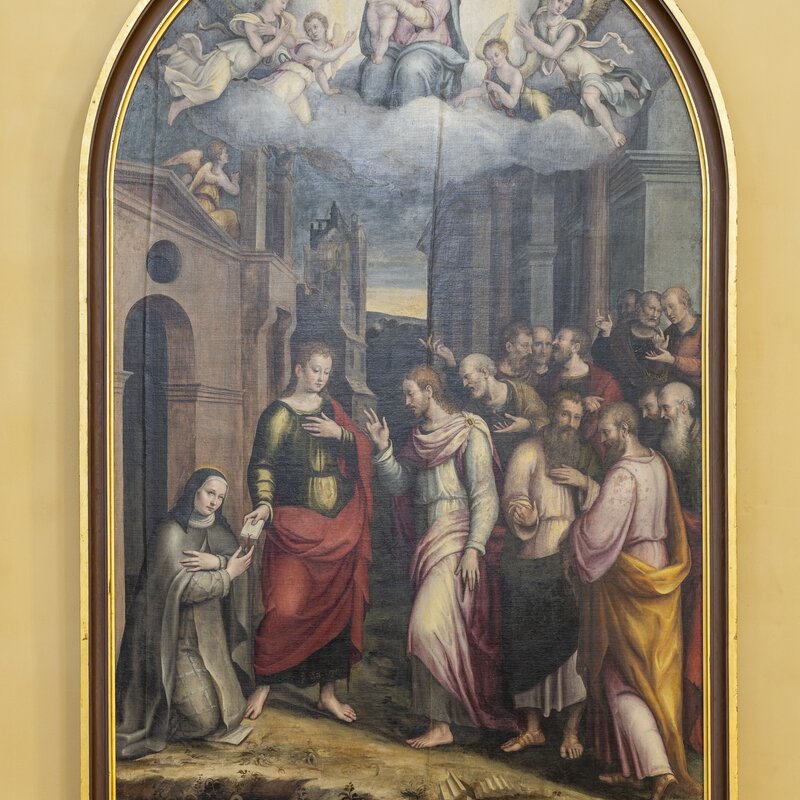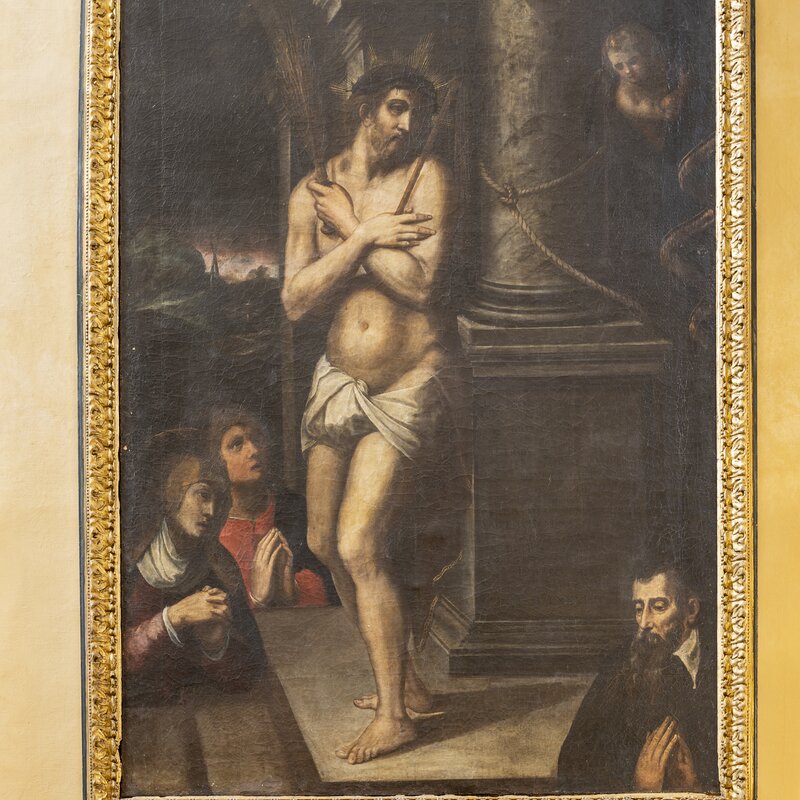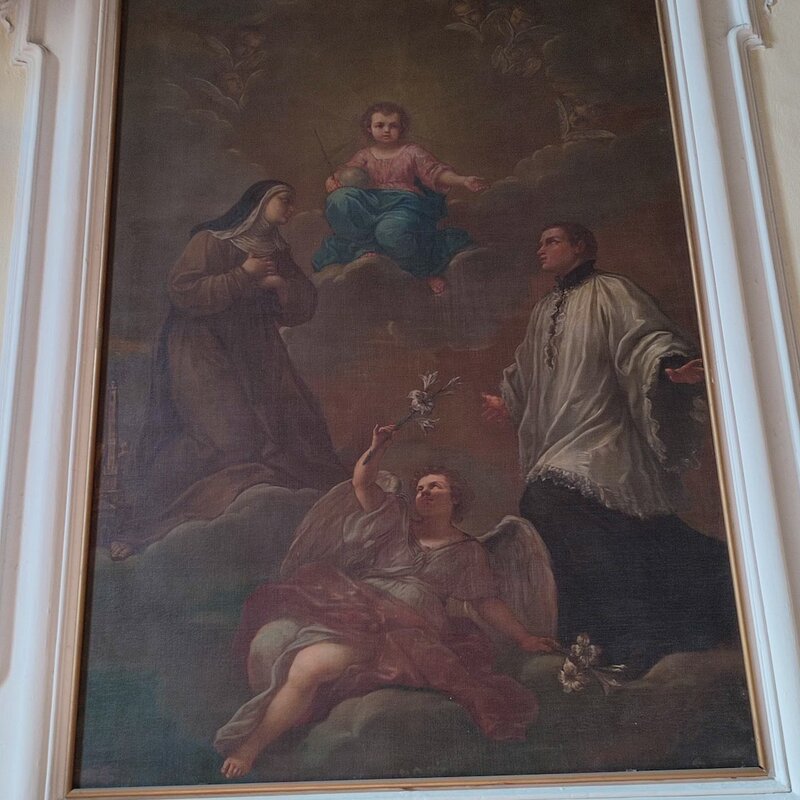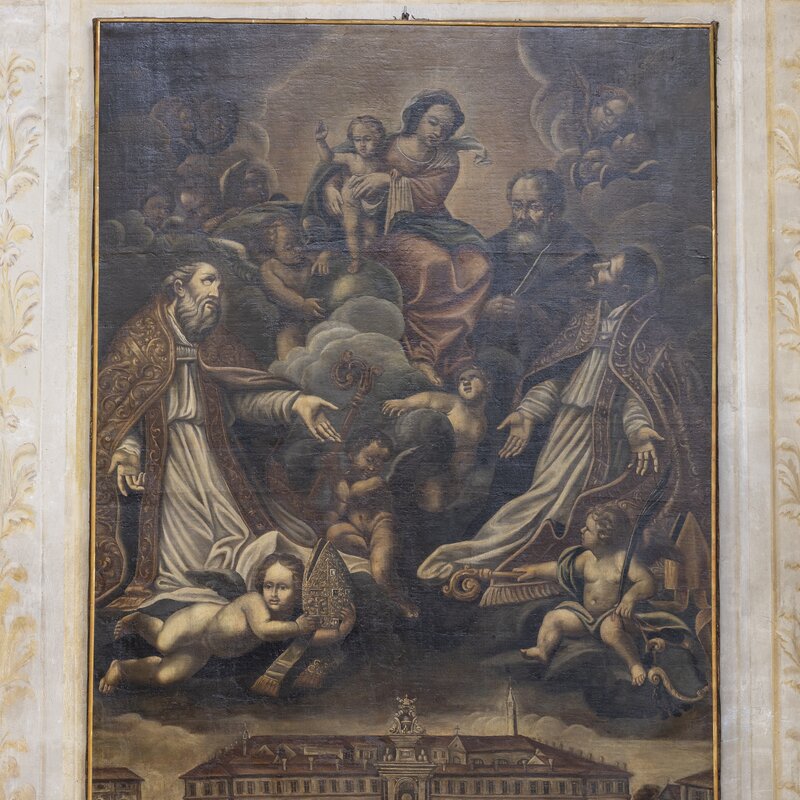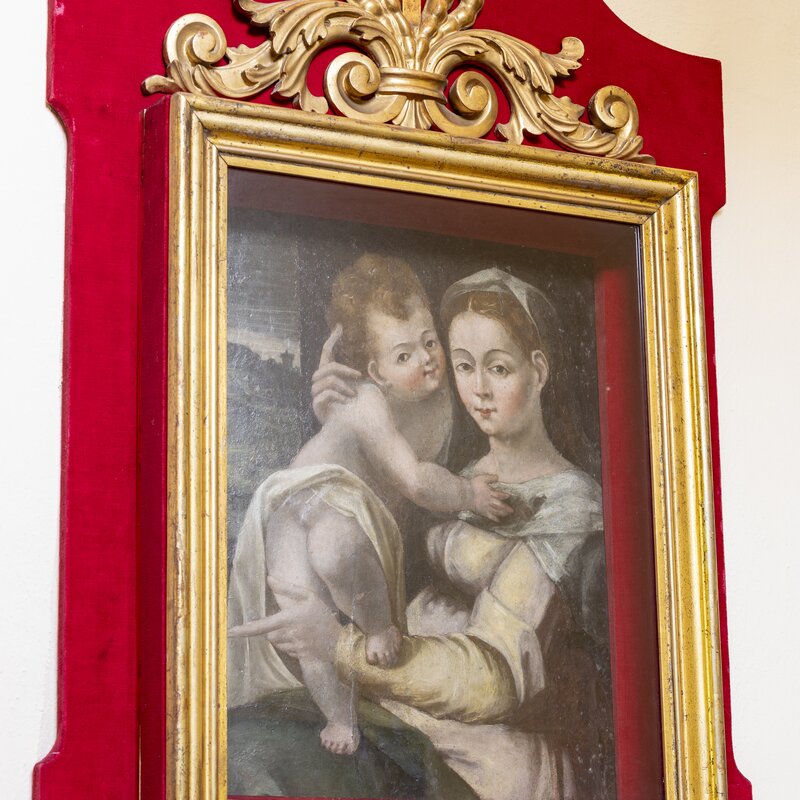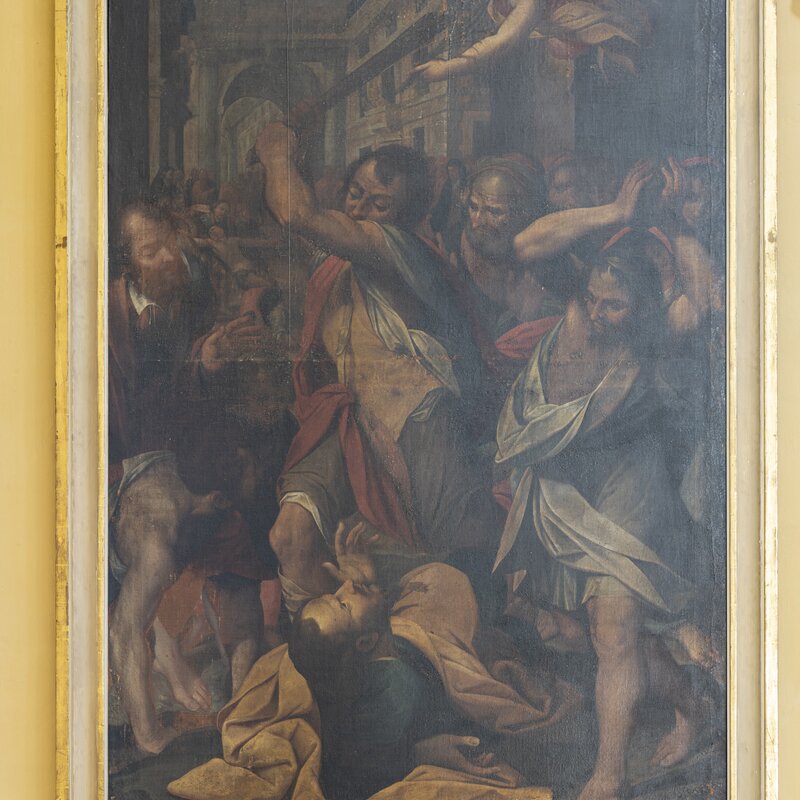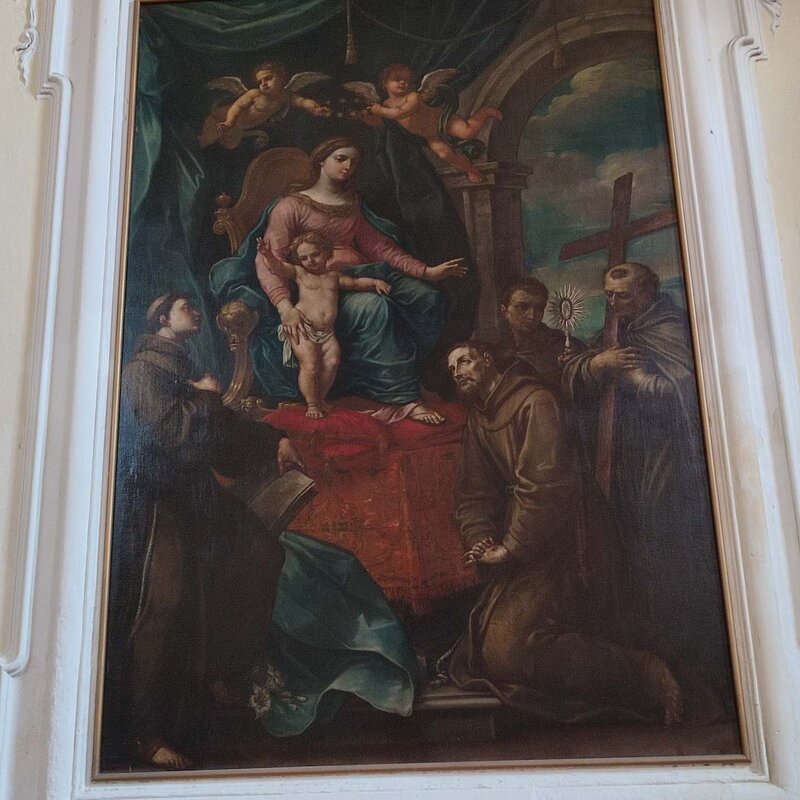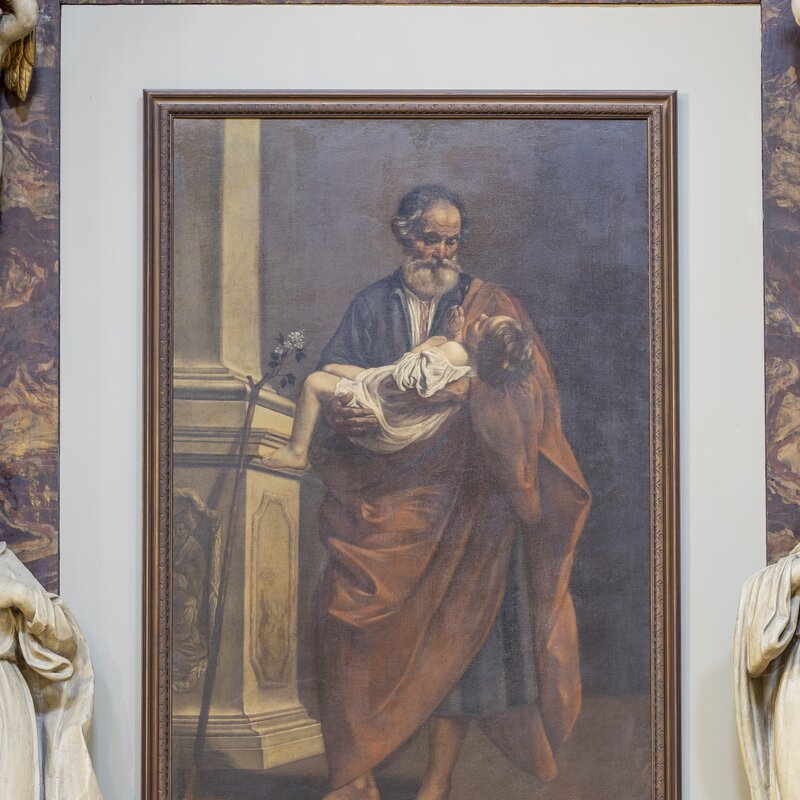Nativity of the Virgin Mary
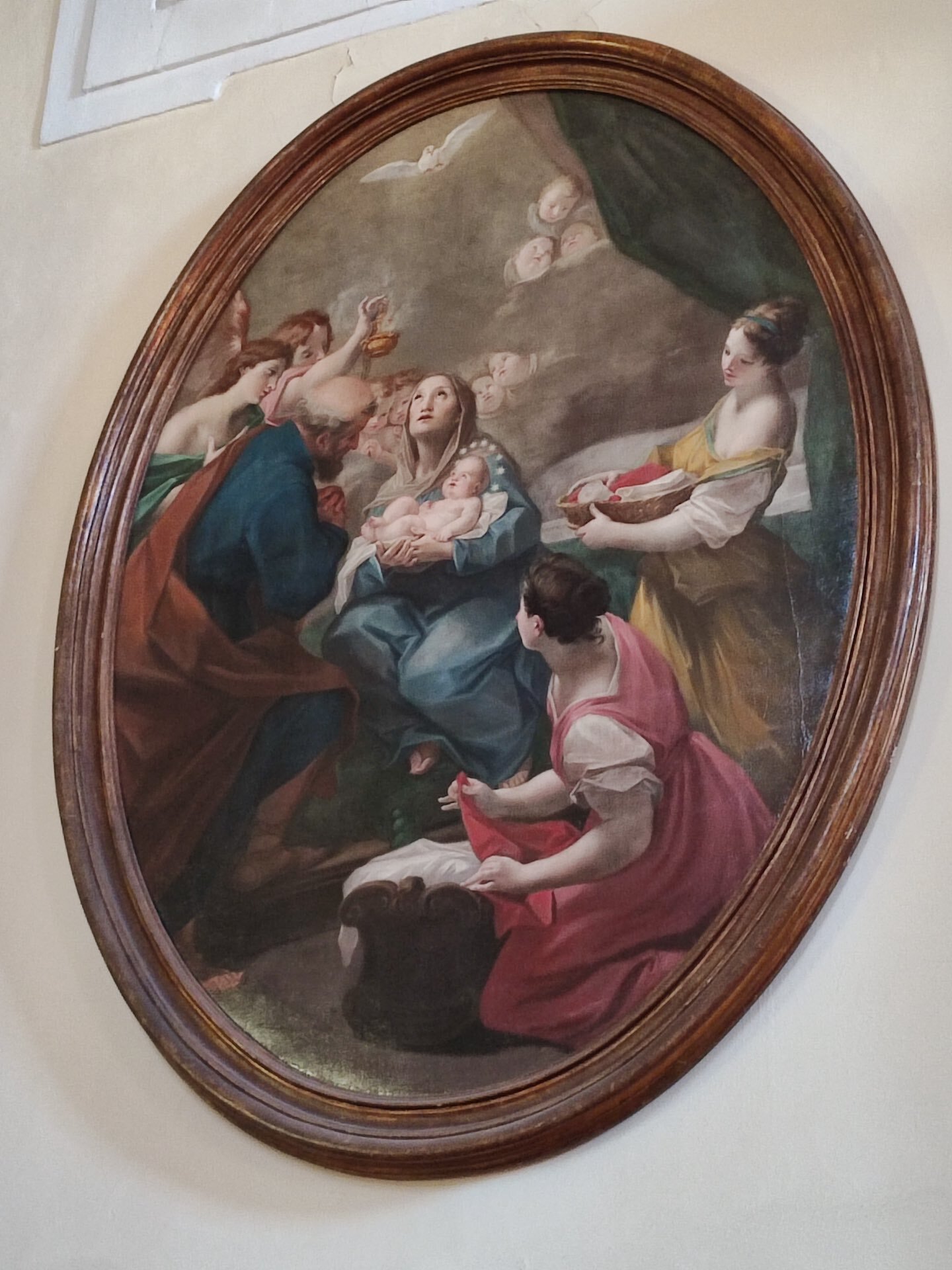
The attribution of this oval canvas to the artist Milani, originally from Parma, is still uncertain although the stylistic similarities make it highly credible.
Giuseppe Milani was born in Fontanellato and trained in the studios of Ilario Spolverini, an artist known for his paintings of battles who was particularly popular with the ruling Farnese dynasty. Following Spolverini’s death in 1734, Milani moved to Cesena, where some of his relatives lived and where he hoped to find better opportunities as a painter compared to his native Parma. Although the young artist immediately showed himself to be very gifted - as shown with the altarpiece of the ‘Pericolanti’ which is now part of the Cesena Art Gallery collection - he faced many difficulties to establish himself.
Among his most significant works, visitors to Cesena can still see his frescoes in the church of San Zenone, the two large depictions of the Nativity and the Beheading of St John the Baptist in the apse of the cathedral, and the magnificent cycle of frescoes featuring the Assumption and Coronation of the Virgin Mary in the abbey church of Madonna del Monte (Savini, 2010). The Nativity in Cervia displays the smoothness and colouration of late-era Milani, whose painting, which was always influenced by a reinterpretation of classicism which he owed to Carlo Cignani, was also influenced by Corrado Giaquinto, who came to Cesena in 1750 to decorate the chapel of Our Lady of the People in the cathedral (Pasini, 1998).
A number of copies can be found in many churches in Romagna, including Forlì (Cathedral and the Church of Suffrage) and Faenza art galley, some of which are traditionally attributed to Giuseppe Marchetti (1722 - 1801) from Forlì (Viroli, 1996).
